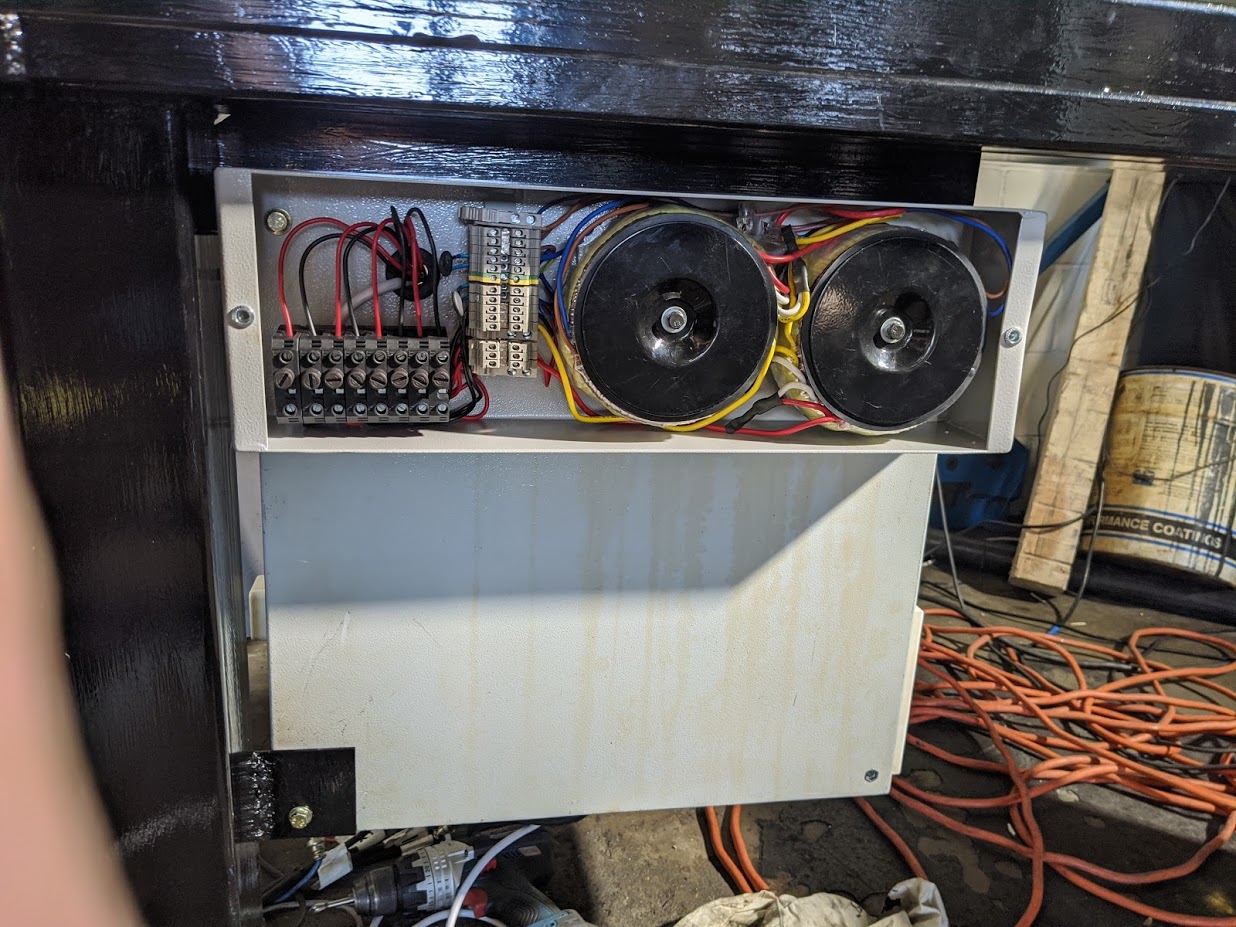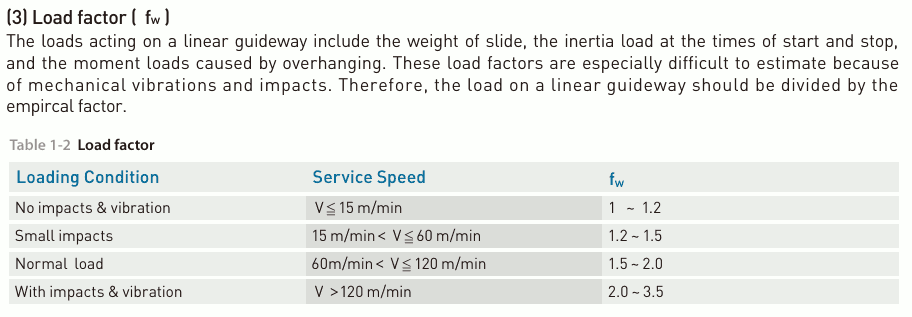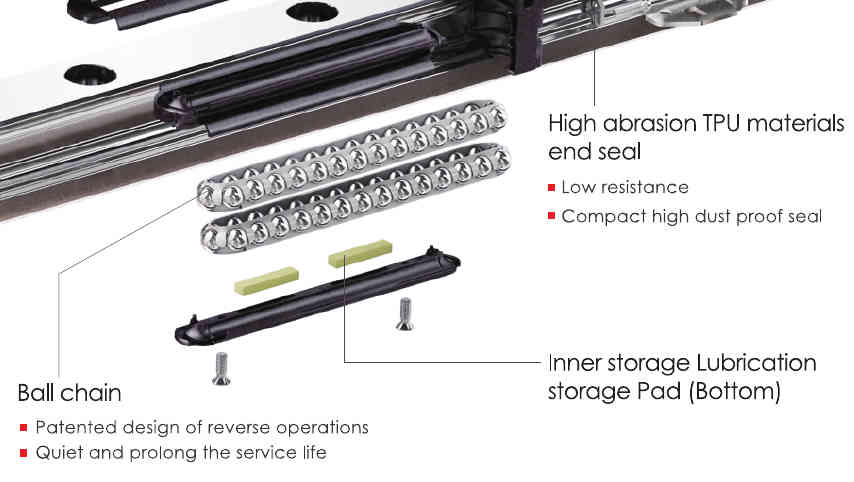Rods "Spaceship" Scratch built Plasma Cutter build
- thefabricator03
- Offline
- Platinum Member
-

- Posts: 1131
- Thank you received: 533
My machine I am sure is slow compared to what you guys are talking about but performs fine with all of the parts I cut from 1.6 sheet to 25mm plate.
Is this more like chasing dyno numbers or in the PC world benchmark figures? Also would having such high acceleration put much more stress on the components? I am all for having nice things but I am just curious if this is something I should try to look at in the future?
Please Log in or Create an account to join the conversation.
- tommylight
-

- Away
- Moderator
-

- Posts: 21019
- Thank you received: 7163
NopeJust curious, Is there any real world advantage to having such high acceleration?
Yes it is, just to prove a point, that stepper systems can do much more than they are credited for. I am pretty sure the big machine can do over 60m/m, but it is useless and the strain on the linear bearings is very high, just the sound they made at 55m/m was terrifying .Is this more like chasing dyno numbers or in the PC world benchmark figures?
Yes it does, and it did, ruined the belts.Also would having such high acceleration put much more stress on the components?
Do not bother, from experience even a machine with 300mm/s/s acceleration is good for cutting 3mm and thicker at 30 to 40A, 750mm/s/s is very nice for everything. And any velocity over 8m/m is useless for cutting, it just makes for a nice show for people watching on the sidelines.I am all for having nice things but I am just curious if this is something I should try to look at in the future?
Please Log in or Create an account to join the conversation.
- thefabricator03
- Offline
- Platinum Member
-

- Posts: 1131
- Thank you received: 533
It sure is interesting to watch! It is pretty cool to see how much performance can be gotten out of something and with these steppers its also cost effective compared to servos.
There is something about doing things differently that I am drawn to - conventional logic says use AC servos but I am sure Rods stepper system will end up pretty close.
Please Log in or Create an account to join the conversation.
- rodw
-
 Topic Author
Topic Author
- Away
- Platinum Member
-

- Posts: 11540
- Thank you received: 3866
I was just looking at the maximum rated velocity for linear rails and its only about 5 m/s so no wonder Tommy's machine was horrendous But they can handle 300 m/s/s acceleration
Please Log in or Create an account to join the conversation.
- rodw
-
 Topic Author
Topic Author
- Away
- Platinum Member
-

- Posts: 11540
- Thank you received: 3866
Thanks Tom,It sure is interesting to watch! It is pretty cool to see how much performance can be gotten out of something and with these steppers its also cost effective compared to servos. .
I'm not sure its as cost effective as you might first think. I am close to $3k into this upgrade...Anyway, the end is in sight. Did I tell you I hate Microsoft now. It took at least 2 hours today to get the lam programmer up and running. But finally with some help from Chris, we got the 17 kg power supply box into place and the control panel back on the machine.
I did get motion and its satisfying to hear the motors clunk into action. I just have to finish off revised wiring to the motor enable signal. I was working on that when Chis arrived so only one is enabled. Its interesting to see that Lam actually have a true motor enable input. But you can invert the signals when programming it.On my old setup, I had a 5 volt stepper driver disable signal hooked to estop. It was fired by a 24 volt relay to switch the 5 volts. But now I can use 24 volts for all inputs so I am going to get rid of the relay and power direct from the 7i76e.
Attachments:
Please Log in or Create an account to join the conversation.
- tommylight
-

- Away
- Moderator
-

- Posts: 21019
- Thank you received: 7163
Bevins had some good experience with some of those china servo systems and he also provided a link to them several times, so i might give it a go in the near future.
But the servo systems on plasma cutters do need proper grounding and shielding, you can get away with pretty much anything with a stepper system ( granted not making some really bad wiring and grounding i see sometimes here ), but not with servos, any miss wiring can result from the motors erroneously moving when the torch is fired to some nice fireworks.
I do have some chinese stepper drives, several types and the best by far have proven the "TB6600" ones that do not use the TB6600 chip but use another one with 109 in the name, they are 3.5A ones sold as 5A, but they do work nicely, very immune to interference (the 6560 was terrible for this), have properly working microstepping and work with 3.3V parallel ports always. Hell even disconnecting a motor wire while powered and enabled did not fry them, and that is a big bonus for beginners.
As for the forces of fast moving carriages, it is the same as with cars, you can have a 2 ton car with 18 horse power doing 40km/h, but above 400 km/h you need 18 more HP for every KM.
Just rolling over 600 balls inside them takes a lot of energy, rolling those same balls at 55m/m ....... Same goes for belts and reduction as spinning stuff at nearly 300 RPM takes some effort.
Please Log in or Create an account to join the conversation.
- rodw
-
 Topic Author
Topic Author
- Away
- Platinum Member
-

- Posts: 11540
- Thank you received: 3866
There was nothing really wrong with the Spacehip before I tackled this upgrade. It was built on some motors and drives I had on hand and a 48 volt switch mode power supply that seemed popular and then some NEMA34's so I could use cheap premade belt reductions. I just got the smallest 34's I could find so my stepper drives could still drive them.
We still want to harness that low down torque Steppers have plus retain their simplicity for DIY builds. With the predictable forces on plasma tables (in the absence of cutting forces), there is not much benefit to be derived from moving to servos provided the whole package is engineered correctly. Thats actually much harder for steppers than it is for servo machines.
I struggle to see why stepper manufacturers have so many products in their lineup and it was hard to make a product selection from our engineering model output. Hardly any motors matched our requirements. The Sanyo Denki's were a bit opportunistic as I got them cheap as chips and they are a perfect match to our model output. Time will tell but one would think replacing $20 motors with $200 ones and doubling the voltage should make a difference!
The servos Bevins uses are an 80ST. If you Google "80ST servo" listings will abound.
Please Log in or Create an account to join the conversation.
- Reinhard
- Offline
- Platinum Member
-

- Posts: 508
- Thank you received: 94
Attachments:
Please Log in or Create an account to join the conversation.
- rodw
-
 Topic Author
Topic Author
- Away
- Platinum Member
-

- Posts: 11540
- Thank you received: 3866
Are you sure about the unit?Linear rails are rated for velocities of 3-5 m/min
CPC rates their linear systems for 10m/s and acceleration beyond 500m/s²
and here an excerpt from Hiwin:
Reinhard, my mistake, it should be m/sec when I review the source I was quoting. My bad! See:
www.rollon.com/IN/en/news-item/378-under...ed-and-acceleration/
Please Log in or Create an account to join the conversation.
- Reinhard
- Offline
- Platinum Member
-

- Posts: 508
- Thank you received: 94
The noise comes from the balls scouring at each other. On cheap linear cariages the balls push each other when moving. That scratching makes the sound ...... we are driving them way beyond that. Thats why those 600 balls make so much noise complaining about being overdriven on a plasma machine!
Better systems provide a spacer between the balls (image taken from CPC, Hiwin and others offer similar):
with such ballchain the friction is lower and lifetime is longer.
At work a carriage was broken and needed to be replaced. But cheese-pairing support collegues bought a carriage without ballchain - now the machine screams like hell.
cheers Reinhard
Attachments:
Please Log in or Create an account to join the conversation.



